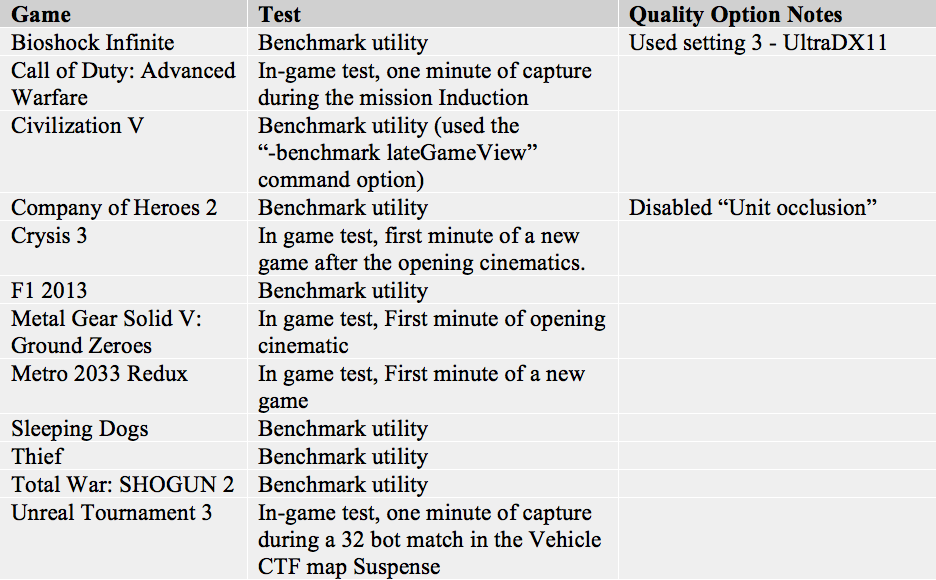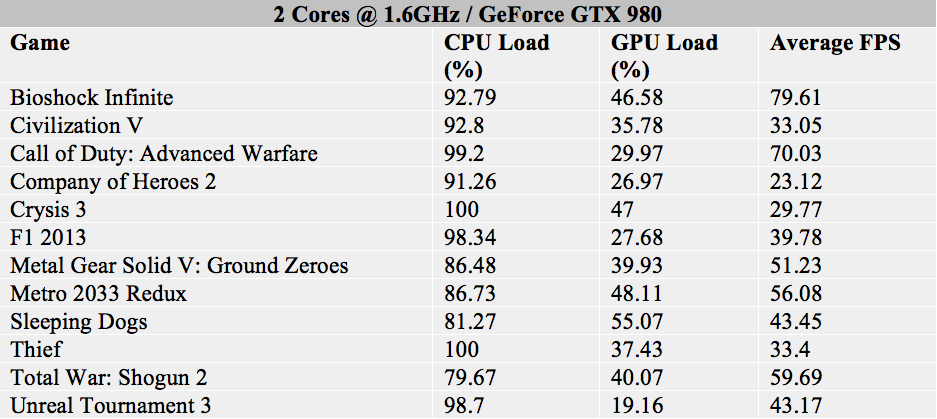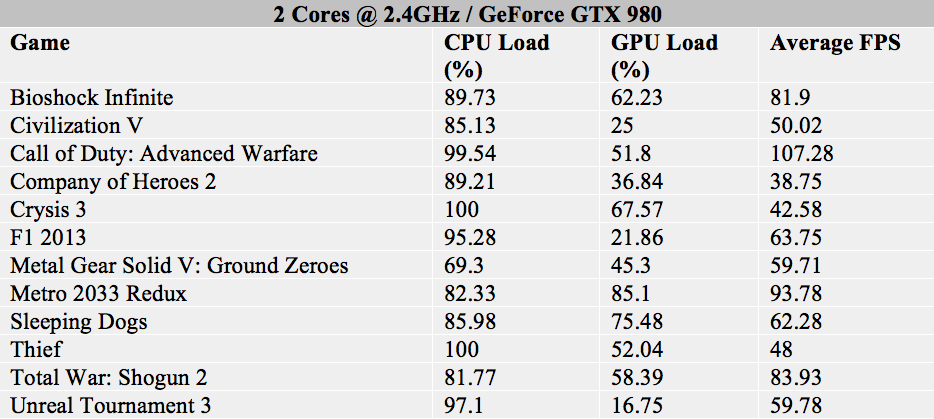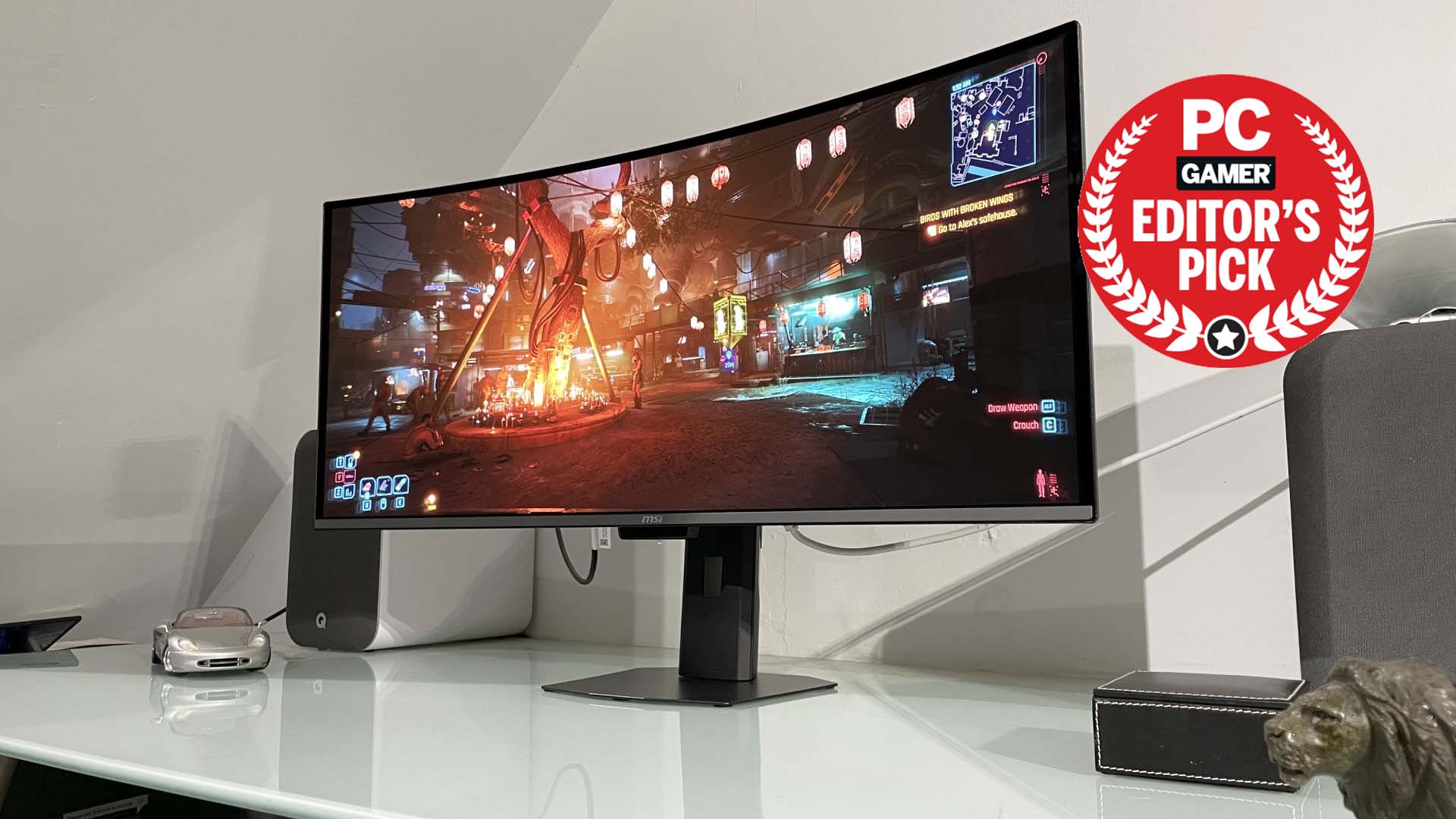Will Your CPU Bottleneck Your Graphics Card?
Examples of the CPU Bottleneck in Action
The Test Setup
Here's the hardware we're using for this demonstration:

To simulate different levels of processing power, the CPU will be tuned to four different settings at the BIOS level. Using PassMark's PerformanceTest software, scores can be used to roughly compare what the CPU achieves versus other CPUs.

The Games
These games will be used to determine whether a CPU bottleneck occurs. They were chosen as a mix of older and newer games of varying genres. Unless noted otherwise, all games were tested at 1080p using the highest quality preset or options and no anti-aliasing, unless it was part of the preset. If a game did not have a benchmarking utility, FRAPS was used to capture a minute of data and the game was run under a repeatable test.

Test Results

With this as the baseline, the GTX 460 SE is certainly under almost full load for most of the games, but the CPU is under a high load of above 70 percent as well. This configuration will definitely bottleneck a video card upgrade. The question is, how much?

While there is improvement across most games with a better video card, the system show signs of CPU bottlenecking, as expected. The GTX 980 should perform much faster, rather than up to double the performance improvement over the old GTX 460 SE.

Adding 50 percent more clock speed to the CPU shows a similar increase in performance across all games. In an interesting case, Unreal Tournament 3 was able to really stress the CPU to the point of bottlenecking, despite being a game from 2008.
To explain the lower GPU loads in some games despite having higher frame rates, the video card was running at full speed throughout this test. In the previous test, the video card didn't consider itself busy enough to run at full speed.
Keep up to date with the most important stories and the best deals, as picked by the PC Gamer team.

Another increase in speed gives the video card more render commands and the frame rate goes up accordingly. Still, with the average CPU load above 70 percent in most of these games, it may bottleneck future upgrades.

At its fullest potential (at stock speeds), the CPU is able to keep the video card busy most of the time. A future video card upgrade wouldn't be bottlenecked, assuming CPU requirements for games don't increase dramatically.
Will Your CPU Bottleneck that Video Card?
In short, depending on the game, if the CPU's load is consistently very high already, the CPU will very likely hold back the performance of video card upgrades. By profiling the CPU and GPU load of games you normally play, you can make better decisions for your upgrade path. Based on the results from this test:
* If the CPU load is maxed out at 100 percent across the board, the CPU needs to be upgraded first.
* If the CPU load is hovering between 70 percent and 100 percent, a video card upgrade will still offer an improvement, but the upgrade path is limited. Unless you plan on upgrading the CPU in the near future, avoid high-end video cards. A GeForce GTX 960 or Radeon R9 280 is about the most powerful card that should be considered.
* If the CPU load is below 70 percent most of the time, any video card upgrade will likely not be bottlenecked.
However, with lower overhead APIs such as Mantle, DirectX 12, and Vulkan, one can expect a bit more life out of old CPUs in the future.

